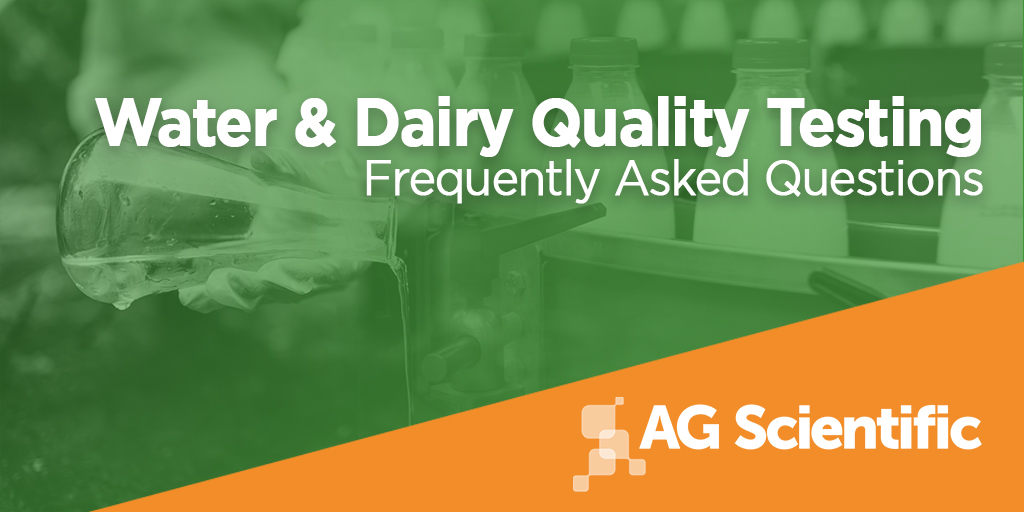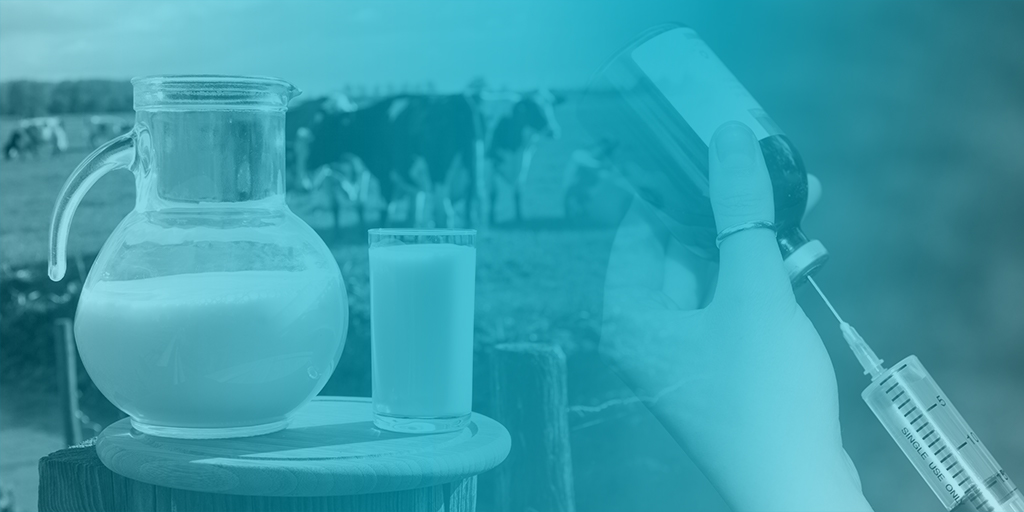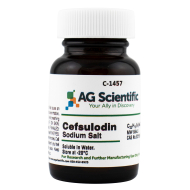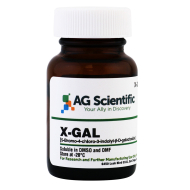Whenever you pour yourself a glass of water, it may appear to be clean and you might expect the water quality to be safe. However, many sources of water contain dissolved minerals, organic compounds, or live pathogens at harmful levels. Other minerals in your water could also result in an unpleasant taste, odors, and could stain bathroom fixtures or your laundry.
Milk also shares some regulations that apply to water. This is because contaminated milk and water used for cooking could affect your health. The California Department of State Health Services (DSHS) has strict guidelines when it comes to monitoring the milk produced from the dairy industry. This is one reason why farmers test the dairy products coming from their livestock. The California Department of Food and Agriculture analyzes these samples and reports their findings to the state.

Testing of water and dairy quality is a critical component in protecting public health. In 2009, the U.S. Geological Survey (USGS) released a report after testing 30 of the nation's 62 principle aquifers across the United States. What they found was staggering. One of every five private wells contained one or more contaminants that exceed the U.S. Environmental Protection Agency's (EPA) limits. Nearly half of all wells tested had at least one problem with the water. They also found that one-third of all wells had some form of microbial contamination.



Findings like these have spurred many Americans to consider testing their water. For similar reasons, some of the regulations that apply to ground and city water also apply to milk products, as well. In this blog, we'll go over some of the most frequently asked questions (FAQs) when it comes to having your water tested, when to test, the types of reagents you need.
AG Scientific continues to be a leading provider for critical reagents that are used to test water, milk, & food items. Many of the reagents we sell are certified and approved for quality testing and are actively used by water and dairy providers today.
Types of Water Quality Tests
In general, water tests are classified under three categories: bacteriological, mineral/inorganic, and organic chemical tests.Bacteriological tests
These check for bacteria (i.e. total coliform, fecal coliform, or E. coli) and can indicate the presence or absence of many types of disease-causing bacteria. Bacteriological tests are costly and are usually conducted only if they are absolutely essential.Mineral tests
These can determine whether or not the mineral content of your water is high enough to affect health or the aesthetic and cleaning qualities of water.Organic chemicals
Tests for organic chemicals are usually performed only if there is a specific reason to believe a contaminant, such as pesticides, have entered the water supply. Industrial and petroleum contamination can also be detected through organic chemical testing.Other tests
Various other forms of testing can be conducted to test radiological contaminants (i.e. radium and radon) or other heavy metals such as arsenic, mercury, lead, or cadmium. Usually such tests are based on suspected contamination from natural or anthropogenic (man-made) sources.When should I test my water?
You should consider testing your home water if you believe your tap has been compromised due to contamination. Water should always be tested after constructing a new water well or if an old, unused well is brought back in service. Many pharmaceutical companies routinely test their water to ensure it falls within the limits established for an ISO and/or CFR certified facility.Consult a water specialist at a water testing laboratory, local health department, or county officials for information on contaminants in your local area.

Even if you suspect your water supply is clean and safe to drink, it is still important to maintain regular testing because it establishes a record of water quality. It is also necessary to regularly check your water well and/or water plumbing system for mechanical problems, leaks, improper construction, etc. especially during the winter and spring seasons, or after a heavy rainfall. You should test the water once a year for total coliform bacteria, nitrates, total dissolved solids and pH levels.
Defective wells may need more routine testing due to more abrupt changes in quality, even if the water still looks, smells, and tastes the same. If repairs are needed or any other maintenance, test your water for coliform bacteria. This will ensure that surface water is not entering the well. California's DSHS recommends taking the sample only after shock chlorination and substantial flushing of the water system.
Which tests should I request for my water and how often?
There is no single test that can provide results on all possible contaminants. Water quality is determined by the right combination of tests. Some contaminants are called primary contaminants and are considered a health risk if they are present in concentrations above the primary MCL (Maximum Contaminant Level). These include micro-organisms and pathogens, inorganic compounds such as arsenic, lead, or nitrate; and organic chemicals such as insecticides, herbicides, fuel and solvents.Some contaminants, while not a health risk, can affect acceptability of water for domestic use if their concentrations exceed the secondary MCL. Given the long list of potential water contaminants, it may be cost prohibitive and in most cases unnecessary to test for all of them.
What should I do if my test results indicate a problem with my water?
If your water test report shows any primary contamination with a concentration above the MCL, you are at risk for adverse health effects. For industrial WIFI and USP-grade water systems, a full system wash/sanitization may be necessary and/or repairs to fix the source of contamination. In such cases, here are a few steps you can take:- If possible, locate and eliminate the source of contamination
- Install an appropriate treatment system
- Install a new well
- Connect to a public water system (if available)
- Use bottled water
Besides the primary contaminants, others such as hydrogen sulfide or sodium can be found at high levels. These nuisance contaminants, while not immediately harmful to health, may indicate the need for an alternative water source or a home treatment system.
Milk and Dairy Product Testing

In order for dairies to avoid off-grade penalties and/or interruption in production, samples must meet state requirements on the following tests:
Antibiotics
Milk that contains antibiotics cannot be used for human consumption. The use of milk drug residues assays ensures that milk from antibiotic-treated cows is not marketed to the public.Freezepoint
This test is a good indicator of added water in milk products. By using a cryoscope, the freeze point of the sample is established. The state requires any test reading above -0.525° Hortvet (or -0.507 °C) be reported to them.Somatic Cell Count
This test measures the amount of white blood cells and tissue cells in a milk sample. All milk contains some of these cells. High counts indicate a herd health problem and directly affect milk production and income. The microbiologist determines the somatic cell count by direct microscopic examination of the milk. A count above 750,000 is reported to the State and will cause a restriction on the sale of that dairy's milk.Standard Plate Count
This is a basic quality test that is a measure of the bacteria in milk. It reveals general sanitation and herd health conditions. By use of culture technique (agar, incubation) the SPC count is assessed. This count must be less than or equal to 100,000 ml for raw milk or 20,000/g or mL for retail products. State penalties may be imposed if these counts are exceeded.Coliform
This procedure is a more specific bacterial test for the quality of the milk. It is an indicator of proper sanitation. High counts can be caused by poor herd hygiene, improperly washed and maintained equipment, or a contaminated water supply. Microbiological testing with Violet Red Bile agar enables the microbiologist to determine the coliform count. Retail products must have a coliform count below 10/g or mL to conform to State regulations. This test is not state regulated for raw milk, but it can alert dairymen to potential problems. Now preferred over antibiotics, cefsulodin is gaining popularity among microbiologists today. When added to the agarose gel it will inhibit gram-positive bacteria and some non-coliform gram-negative bacteria that may cause your test to receive false positives.Phosphatase
This test is performed to ensure pasteurization has been performed on all retail products. A fluorometric procedure is used for the analysis and an alkaline phosphatase reading of less than 500 μL must be obtained.Dairy Water Testing
To be suitable for use in dairies, water must sanitary and free of micro-organisms that could in any way start spoilage. The following procedures are used in the testing of dairy waters to ensure the water is of proper quality:
Coliform MPN: procedure is used to detect coliform organisms in the source water used by the dairy plant.
Membrane Filtration (MF): technique is used to detect coliform organisms in glycols and chill waters.
Water Heterotropic Plate Count (HPC): used to further analyze the quality of the dairy operation water. This can be done on both source and glycol/chill waters. Through a culture technique (agar, incubation) a count is assessed.
Water & Dairy Testing Supplies
Beta-Lactamase
We offer both sterile and non-sterile, as well as standard and extended-spectrum forms of β-Lactamase. These enzymes can remove beta-lactam antibiotics from samples by breaking down the β-lactam rings that make up their structures. Through hydrolysis, the lactamase enzyme breaks the β-lactam ring open, deactivating the molecule's antibiotic properties.Antibiotics
Beta-lactam antibiotics are typically used to treat a broad spectrum of Gram-positive and Gram-negative bacteria. Beta-lactamases produced by Gram-negative organisms are usually secreted, especially when antibiotics are present in the environment.
Cefsulodin Sodium is a semi-synthetic third generation cephalosporin antibiotic, with a structure similar to penicillins and beta-lactams. Like beta-lactams, cephalosporins interfere with PBP (penicillin binding protein) activity involved in the final phase of peptidoglycan synthesis. PBPs are enzymes which catalyze a pentaglycine crosslink between alanine and lysine residues providing additional strength to the cell wall. Without a pentaglycine crosslink, the integrity of the cell wall is severely compromised and ultimately leads to cell lysis and death.
In ground-water studies, it is often desirable to enumerate both total coliforms and E. coli. This method can also be used to enumerate E. coli in surface waters; however, plates may be difficult to read because of non-target growth in moderately or highly polluted waters. To overcome this issue cefsulodin sodium salt is added to the agar to inhibit the non-target growth. Cefsulodin has a specific activity against Pseudomonas aeruginosa. It has no significant activity against other Gram-negative bacteria and very limited activity against Gram-positive and anaerobic bacteria. E-Coli is a Gram-negative bacteria that is resistant to the effect of cefsulodin sodium salt, making it the ideal antibiotic to be used for contamination control.
X-GAL can be used to determine E. coli and coliform content in drinking water samples.
Additional Reading:
-
Sequential Batch Reactors (SBR) for Wastewater Treatment
-
Water Remediation Electrochemistry
-
Ion Exchange Membranes for Electrodialysis


